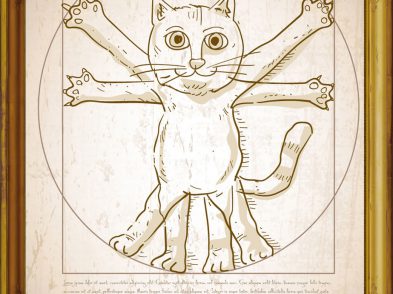‘Loda di Dio vera,’ Dante called Beatrice in the Divine Comedy: ‘True glory of God.’ Dante Alighieri wrote about Beatrice Portinari as his divine inspiration. If you have ever felt inspired to write to Beatrice, you will be happy to know that there is a way for you to write to her and leave her your letter.
The Church of Dante, on tiny via Santa Margherita, just off via del Corso, is documented as early as 1032. It was the place of worship of several prominent Florentine families, including the Donati, the Adimari, the Cerchi, and the Portinari, the family to which Dante’s Beatrice belonged.
Today, the ancient church is much more than the place where these historic families attended mass. The warm and pleasant little church calls out to anyone who loved someone he or she could not reach out to, it invites anyone who read Dante’s masterpiece, inspired by the celestial and beautiful figure of Beatrice. ‘Dante’s Church is different from other churches in Florence with its focus on the love between Dante and Beatrice, unrequited as it was,’ commented Gabriela Barnett, a junior studying at Syracuse University in Florence. ‘It provides a special church for people in love.’
The Church of Dante is said to be where Dante and Beatrice met. It is also said that Dante married Gemma Donati here in 1295. Whereas it is known that Dante, after his exile, was buried in Ravenna, it is said that Beatrice was buried here on June 8, 1291. This may be just a myth, but it has brought popularity to the church and to Florence. A plaque near what is said to be Beatrice’s tomb commemorates her life.
Visitors come to the church to pay homage to the great poet and to Beatrice, the woman who was both his muse and the object of his affection. The low light and the soft music give the intimate interior a mystical feel. Frescoes adorn the walls, along with several modern-era paintings dedicated to both Dante and Beatrice.
In Canto II of the Inferno, Dante describes Beatrice as beata (blessed) and bella, with eyes that shone brighter than the stars. It may be somewhat difficult to tell whether her eyes really shone that brightly, but in the paintings she is beautiful. One of the paintings depicts Beatrice’s marriage to Simone de’ Bardi. The other one, by Mario d’Elia, illustrates the first incontro (meeting) between Beatrice and Dante, who is wearing his famous red attire.
The main attraction, though, is next to the tomb that is supposedly Beatrice’s. There sit baskets full of paper of all colors and sizes, all with messages for the heroine of the Divine Comedy. ‘These notes left for Beatrice are an enduring testament to Dante and the everlasting power of love,’ opined a Spanish tourist one Friday morning, after asking me what all the pieces of paper were, suggesting the extent of Dante’s influence.
Although popularly known as the Church of Dante, its original-and true-name is Chiesa di Santa Margherita dei Cerchi, and it is dedicated to Santa Margherita d’Antiochia. A painting of the Madonna and the Four Saints by Neri di Bicci (1419-1491) adorns the altar. Santa Margherita d’Antiochia, known to the Catholics as one of the 14 auxiliary saints, is the patron saint of pregnancy; many other Christians believe her to be a virgin and a martyr: according to the Golden Legend, when Olybrius offered her marriage at the price of her renunciation to Christianity, she refused and was tortured and eventually killed. During her torture, several miracles were said to have happened.
The church is open from 8am to 12:30pm and from 5pm to 7pm. There is no charge. To find it, follow via del Corso from the Piazza della Repubblica, looking right for the signs ‘Dante’s church’ and ‘Dante’s house.’ Nearby is also a museum dedicated to Dante.




